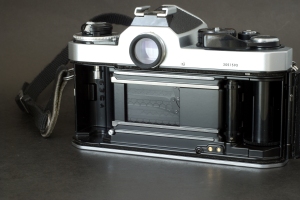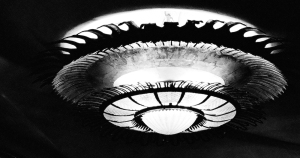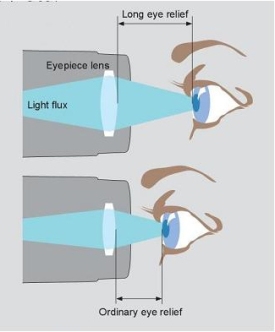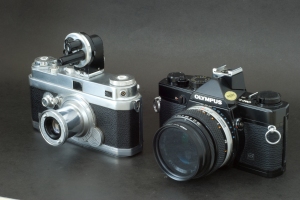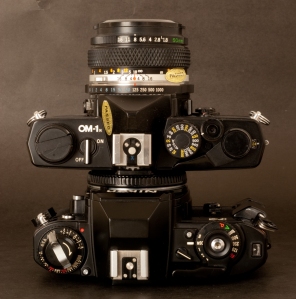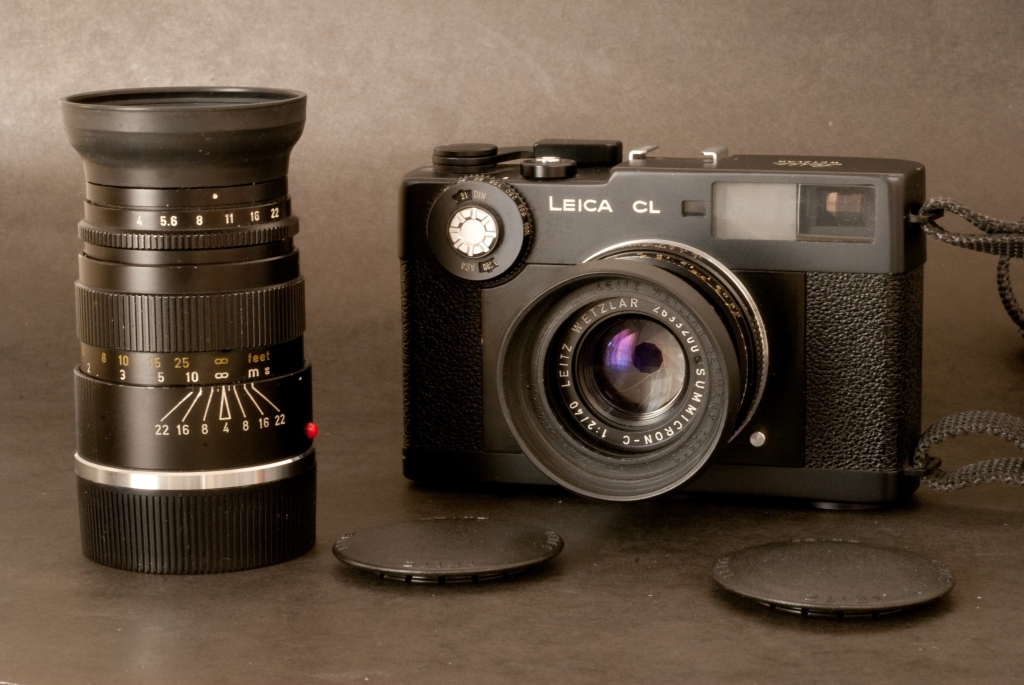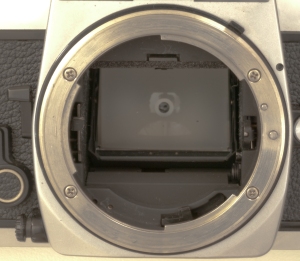Nobody’s going to argue that in the hands of a reasonably competent photographer, and in most situations, a recent “pro-level” digital SLR is going to deliver much better pictures than an amateur dSLR released 10 years ago. Resolution, Dynamic Range, Low Light Sensitivity, Color Accuracy are all going to be significantly better. And for a much smaller level of effort: scenes that used to require the photographer to shoot in RAW and spend 10 minutes “processing” each picture in Adobe Lightroom (or even worse, hours in Photoshop) can now reliably be shot in JPEG and uploaded directly from the camera to whatever social network or on-line photo gallery.

In the world of film cameras, it’s different. As long as the camera meets a few basic requirements: mount the lenses with precision, meter and expose with accuracy and consistency, maintain the film plane flat, inform the photographer of the decisions taken by its automatic systems, and let him adjust the parameters when necessary, there will not be much of a difference between the pictures created with a pro and an entry level camera. The pro camera will be faster, more accurate, more solid, more durable and will provide more control options to its user, but ultimately, the quality of the results will be a function of the quality of the lens, of the film, and of the skills of the photographer.

Which brings us to the mid-nineties. The big Four (Canon, Minolta, Nikon, Pentax) all have successfully converted their SLRs to autofocus, electronics and polycarbonate, and have persuaded most of the photographers to buy them. There are a few hold outs at the high end of the market who still buy and use manual focus semi-auto cameras built traditionally out of aluminum and brass or titanium (Leica R and M series, Nikon FM2, Olympus OM-3ti for instance), and “learners” or photography students, who are looking for cheap cameras to learn the basics of photography, and who generally end up buying entry level Pentax and Minolta cameras. Both manufacturers already have relocated the production lines of the K1000 and of the X-300 to China, and can propose them (body only) for less than $150.00. In comparison, Nikon’s FM2 is approaching $500.00, Olympus’ (automatic) OM-4ti sells for $1,000.00, and the semi-auto OM-3ti – produced in very limited quantities – is probably in Leica territory when you can get one (a semi-auto Leica R6.2 sells for $2,800.00 at Adorama in 1995).

Following the example of Canon and Nikon (who had commissioned the design and the manufacturing of their entry level manual focus / semi-auto T60 and FM10 to Cosina), Olympus launches the OM-2000 in 1997. Like its predecessors on the Cosina production lines, the OM-2000 is based on a platform originally developed for the Cosina CT-1, and somehow customized to Olympus’ requirements: unique to the OM-2000 are the Olympus bayonet, the gun metal color of the camera’s body, and the presence of a spot/average meter switch. It is generally sold in a bundle with a 35-70 f/3.5-4.8 lens, also made by Cosina. I did not test this lens and can’t comment on it.

The OM-2000 is not designed to be great, but cheap and simply good-enough. The outer shell is of polycarbonate, the film rewind and the self timer lever are fragile (I had an issue with the rewind knob – I applied too much force to it and ended up unscrewing it from there body), the metallic shutter tends to be loud, but the camera, though basic and unsophisticated (the LEDs in the viewfinder look a bit crude), is pleasant to use (large viewfinder, smooth commands) and with its nice color, makes a good impression. The shutter is fast (1/2000 sec, 1/125 synchro), the spot meter useful and easy to use (there is a reminder in the viewfinder).
Contrarily to the OM-2 whose mirror and shutter are very well damped (you can shoot at 1/15sec without a tripod in a museum, for instance), the mirror or the shutter of the OM-2000 tends to generate strong vibrations, some of the pictures I took with it show it clearly. My advice: avoid low shutter speeds unless the camera is firmly held in place.

As for the real value of this camera, it depends on your point of view. For a collector of the “real” Olympus OM series cameras, it’s not worth much. It has nothing to do with the renown single digit family of OM cameras (OM-1, OM-2, OM-3, OM-4). It can not share any of their accessories (winder, focusing screen) and can not take advantage of the TTL flash capabilities of the units designed for the OM-2 and its followers.

With a good lens (Olympus’ Zuiko lenses have a great reputation), a good film and a good photographer, it will take good pictures – and should serve its owner well. It’s not as solid as a Nikon FM2, it’s not as beautifully made as an Olympus OM-3, it vibrates more than an OM-2, but when new, it was a fraction of the price of those cameras, and now, it can be had for a few dozens of US dollars. If you’ve heavily invested in OM Zuiko lenses and in expensive OM Ti bodies, adding a cheap OM-2000 to your equipment list is a good insurance plan – you can use it when you don’t want to risk your precious OM-3Ti, and it can save your day if the electronics of your OM-4T decides it had enough.

With the right lens and a good photographer, simple film cameras can take great pictures. The OM-2000, while clearly not a true blood Olympus OM camera, maybe the cheapest and easiest way to shoot film using Olympus Zuiko lenses today.











